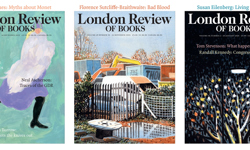“A year of transition”, is how Shortlist Media managing director Karl Marsden describes 2014 – twelve months during which the ambitious eight year-old ‘freemium’ publisher experienced its first failure with the closure of upmarket fashion website Never Underdressed, but also made a number of important changes he believes leaves the business well-positioned for what lies ahead.
It was the year Shortlist Media launched Stylist on tablet, licenced ITP Group to launch a local print version of Stylist in UAE, and transitioned shortlist.com and stylist.com onto a new content management system - resulting in strong uplift for both. Previously, both sites were averaging 500,000 unique visitors and 5m page views per month in the UK; since moving onto the new CMS, these figures have risen to 700,000 uniques and six to eight million page views.
Then, last December, the company announced the cross-platform merger of its print and digital content solutions and a single, cross-platform trading unit was launched.
With so much on the agenda, small wonder Marsden sees this rapid fire period as marking Shortlist Media’s “coming of age”.
Never Underdressed: RIP
“Closing Never Underdressed was certainly part of the company growing up – our first failure, and a sobering experience that forced us to look at ourselves and what we are doing and what are our core values. But something I said to the team at the point we called it a day was that we are a truly innovative company and as such, if there are no failures on our record then, frankly, we’re not trying hard enough and are playing too safe,” he says.
“Never Underdressed was a decent idea, but implementationally, I think we came up short. High fashion is not necessarily our heartland and while there is a gap there – and there clearly is a gap - whether it is up to Shortlist Media to fill that is another question. Because our heartland is urban professional commuting working men and women, and Never Underdressed took us to a different place.”
The audience – though highly affluent – was just too niche … for Shortlist Media, at least. But the business has learned from this.
“So the very next thing you see from us will be urban and aimed at a clear target within the ABC1 working audience. It could be male, it could be female, and it could be on any platform – print, digital or broadcast - but it will be in our heartland because that’s what works for us. And that’s powerful, because we can own that and continue to learn more about the particular audiences we serve and in that way deliver value back to readers and the media market – our advertising business,” he adds.
The Shortlist story so far
Founded in 2007 by Mike Soutar, Tim Ewington, Phil Hilton, Matt Phare and Marsden, Shortlist Media provides high quality premium content to affluent urban consumers through four visible brands and six clearly distinct products: weekly lifestyle magazines ShortList for men and Stylist for women; his and her daily email brands Emerald Street and Mr Hyde; and standalone websites shortlist.com and stylist.co.uk.
The business is based on a ‘freemium’ publishing model with its titles free to readers and its magazines distributed not via traditional newsagents but by hand. With investors including Beano and Friends Reunited owner DC Thomson, the company reported revenues up 21% to £21.6m and digital income up 111% year-on-year for the twelve months ending 31 August, 2013.
Entrepreneurial in approach and launch-focused by culture, Shortlist Media prides itself on being a magazine evangelist and talking a positive game for print. That said, digital is also a priority and aside from websites, the company’s two daily email newsletters have broken new ground.
“Readers and advertisers are our dual audience, so we’ve got to supply the readership with what they want when they want it, and that’s Shortlist Media’s big strength,” Marsden believes. Packaging and delivering great content in the right way to a target audience just doesn’t go out of fashion - despite the fact the distribution mechanism has changed.
“There are definitely challenges at the newsstand - and associated with consumer spending. But if you have a quality, high value product – a high quality magazine for free – and you are prepared to take it to the audience and put it in their hands, then that is a really powerful proposition,” he adds. “And that is why our editors get constant feedback any editor would love to hear: ‘We love your product, don’t stop’.”
Take Stylist. On top of 400,000 print copies, the brand generates 600,000 to 700,000 unique visitors each month to the website and 30,000 active weekly downloads since the launch of its tablet edition on Apple Newsstand. The strength of the brand lies in its cumulative impact rather than any one of its constituent parts, and the fact that each product plays to its own platform’s respective strengths.
Tablets – beware false hopes
“If you are trying to rescue your print business through tablet, then you are probably barking up the wrong tree,” Marsden observes.
“I completely empathise and sympathise with the paid-for fraternity, with business under pressure, who think, seeing an oasis called tablet on the horizon, if only we could just convert what we used to get in print into a digital edition downloaded in volume and paid for … but that is the wrong approach.”
Far better, he adds, is to go at that platform with an open mind and look at what consumers really want from a digital edition - though publishers must beware an important bear trap.
“You’ve got to check yourself to make sure you are only doing what you are doing because it will serve consumers’ need,” Marsden continues. “Because technical innovations can become incredibly tiresome really quickly when the reader is in a lean back, me-time reading moment and your tablet edition is performing technical somersaults, buffering, or failing to download. So our tablet policy is clean and quick, and our technology team is incredibly disciplined.”
Merged content solutions
To better capitalise on its cross-platform portfolio of products, Shortlist Media recently centralised its disparate content solutions offering into a single, 20-strong unit and launched a single cross-platform trading unit.
What happens when you launch is you end up with vertical teams each representing their brand, Marsden explains.
“A couple of years ago, we made things more portfolio-focused with print hubbed and digital hubbed. The next step was to look at the commercial side of things. We’d already seen content solutions rise from 10% to a solid 30% of our turnover - and cross-platform probably now touches 48 or even 49% of revenues. Clients and agencies want to do more joined up work and we had to take account of that,” he says.
“The media representative of the future - be it the sales director or managing director - will be data-driven, cross-platform savvy, tech-literate and social media aware as well having an understanding of great traditional print values such as trust, the power of me-time and communications skills. That’s where we’re all heading as the world is moving on.”
Display advertising is growing, too – powered by digital.
“Display is definitely under pressure as a whole, but we are in the fortunate position of delivering a product both consumers and the media market have confidence in,” he observes. “We tend to stay out of the commoditisation of digital display by selling vertically. But there’s pressure there, of course, with the programmatic model moving in, which over time will affect the whole market. But for now, we are moving into it gradually, and you can retain a certain amount of control.”
Native potential
It’s all about trust, Marsden adds - the trust between reader and editorial, and the value of that trust to Shortlist Media’s other audience: advertisers – which is what makes native advertising such a fascinating evolution.
“Native advertising has come through digital, but how you bring it to life one step beyond an advertorial is really interesting – to get marketing messages genuinely within the content flow of a content platform, be it print, digital or mobile,” he believes.
“If we can work out a way to do this within our content in a way readers are happy with, then we will. They know they get quality, free products on the basis that advertising is a part of that package. The only rule, from their feedback so far, is that brands should be relevant. But you can’t assume anything about what they will or won’t accept. You’ve got to listen and learn. What is clear, though, is that native advertising does not – and should not – mean disguised or invisible. There is no win in tricking people into consuming advertising: that will only backfire.”
Looking ahead, Marsden says he is excited by prospects for the coming year with discussions already underway for “a number” of launches.
Internationally, the business hopes to build on the success of Stylist France – launched via a 50:50 joint venture with Groupe Marie Claire in 2013 - with the launch of Shortlist in Dubai, possible under licence (the model it’s used for Stylist in UAE). “We definitely want to launch more overseas editions,” he says. “What we’ve achieved so far we’ve achieved without putting an international exec on this. The opportunity is to put a team on it, and that should accelerate things quite rapidly.”
Closer to home, Marsden reveals, the business is discussing another UK launch. Then there is Shortlist Media’s first live event which will take place this October at London’s Business Design Centre.
“The best incarnation of a brand idea is what we will always launch,” he says, “although there’s a lot more mileage in the print market. Weak products will go, but what remains will grow stronger, which can only be good news – for all of us.”












